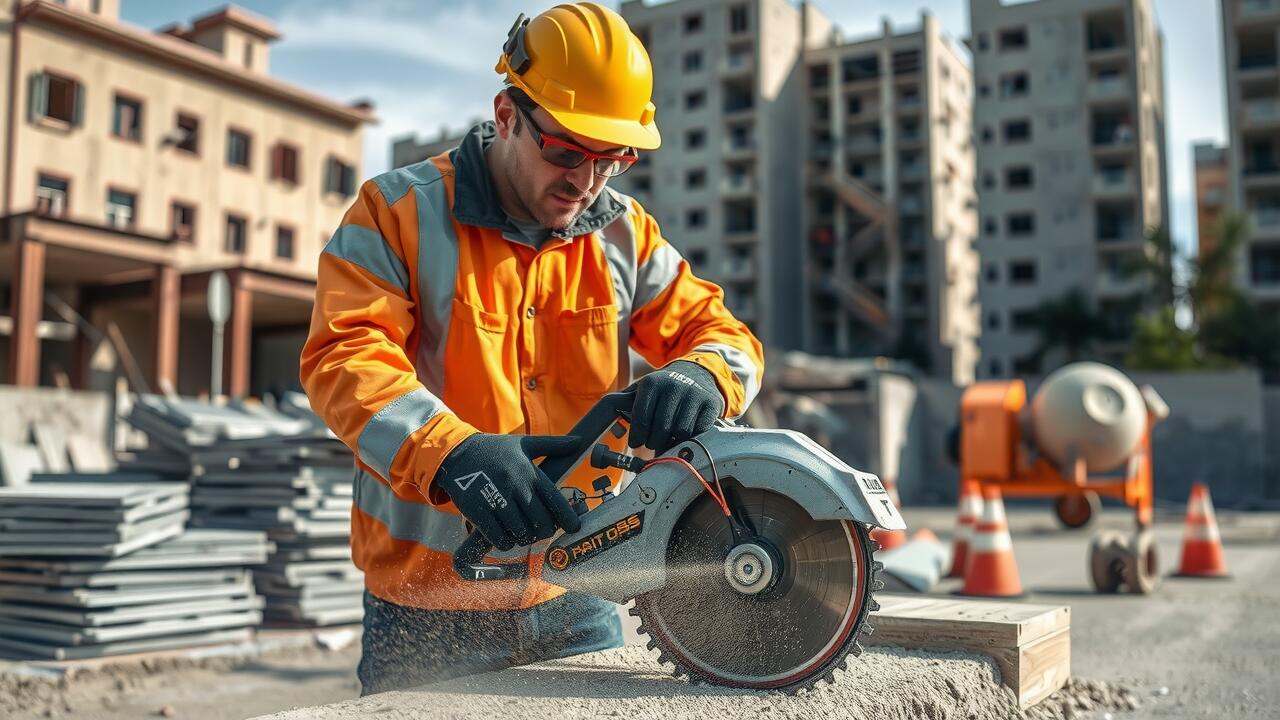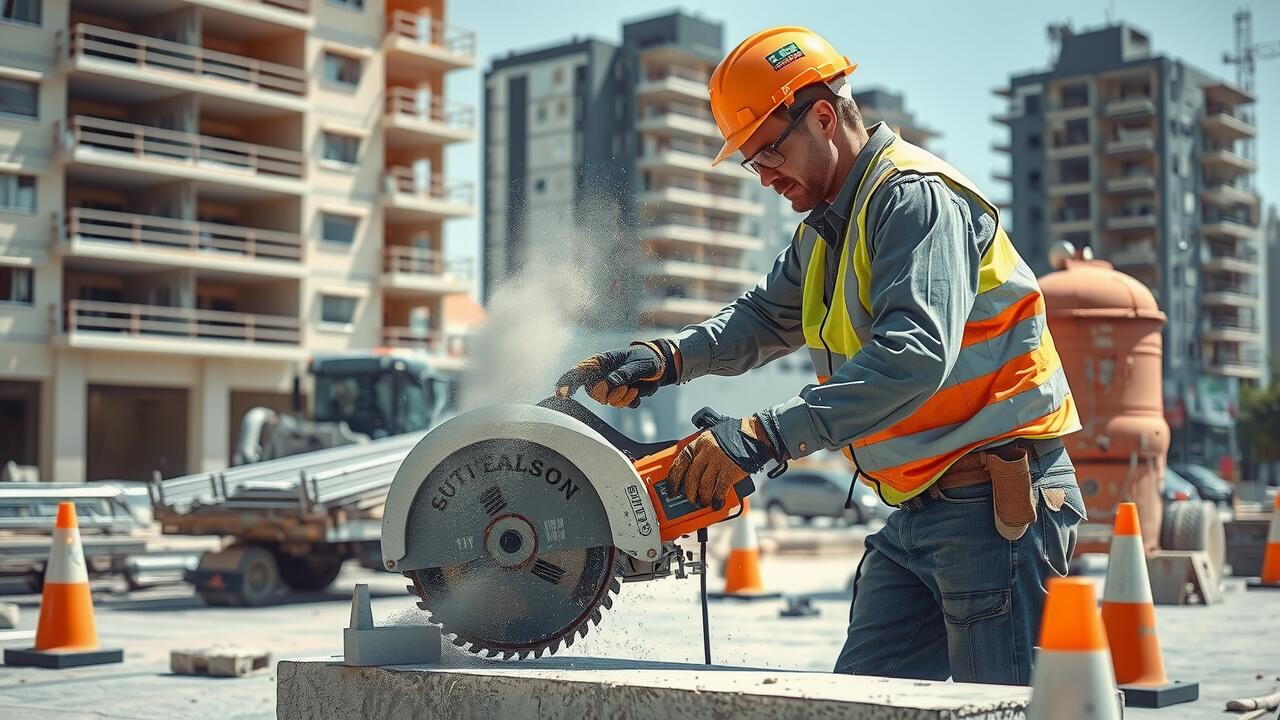
Table Of Contents
Selecting the Right Blade
When it comes to concrete cutting, selecting the right blade is crucial for achieving optimal results. Blades come in various types, each designed for specific materials and cutting tasks. Diamond blades are among the most popular for their durability and efficiency. They can tackle reinforced concrete as well as asphalt. Knowing whether you need a segmented, turbo, or continuous rim blade enhances your chances of a successful project. Each design has its advantages that cater to different cutting techniques and finishes.
The thickness and density of the concrete will determine the number of available cutting options. A thinner blade might work well for softer concrete, while a thicker one is necessary for harder materials. Additionally, consider whether the cutting will be performed wet or dry, as this may influence your blade choice. Matching the blade to your specific application ensures smoother cuts and reduces wear on both the blade and the cutting equipment. Taking time to assess your project needs will pay off in terms of efficiency and quality.
Factors Influencing Blade Choice
When selecting the right blade for concrete cutting, several factors play a critical role in ensuring optimal performance. The type of concrete being cut, whether it’s standard, reinforced, or decorative, will influence the choice of blade materials and thickness. Additionally, the cutting method—whether hand-held or wall saw—also impacts the recommended blade specifications. Each application may warrant unique features, such as diamond segments designed for durability or specific particle sizes suited to the concrete’s density and strength.
Another important consideration is the diameter of the blade, as larger blades can cut deeper and may be more efficient for thicker concrete sections. However, smaller blades offer better control and precision for intricate work. The cutting environment is equally significant; wet cutting may require blades specifically engineered to withstand high moisture levels. All these factors must be taken into account to ensure the selected blade meets the demands of your concrete cutting project effectively.
Techniques for Precision Cutting
Achieving precision in concrete cutting requires careful attention to technique and equipment. Start by marking clear, straight lines on the surface. Using a chalk line or laser guide helps in creating visually accurate cutting paths. The selected blade must match the intended cutting depth, ensuring thorough penetration without risking excessive chipping or cracking along the edges. A steady hand combined with a controlled speed during cutting aids in maintaining the integrity of the concrete while enhancing overall precision.
Stability plays a crucial role in executing clean cuts. Employing a sturdy saw with anti-vibration features can significantly reduce the likelihood of wandering cuts. Additionally, securing the workpiece if possible minimizes movement during the cutting process. Regular checks on alignment throughout the operation help maintain accuracy and prevent the potential for uneven surfaces. Proper training in manipulation techniques enhances skill, resulting in smoother finishes and tighter tolerances in concrete cutting projects.
Maintaining Accuracy in Your Cuts
Maintaining accuracy in your cuts during concrete cutting requires careful planning and setup. Marking your cutting lines precisely is essential for ensuring that the final result aligns with your project specifications. Utilizing tools like chalk lines, markers, or even laser guides can enhance the precision of your cuts, dramatically reducing the chance of errors that could lead to wasted materials or time.
Another key factor in achieving accurate cuts is the proper handling of your cutting equipment. Ensuring that your saw or cutting tool is well-maintained and calibrated helps in achieving clean, straight lines. Regularly checking blade alignment and the tension of the equipment contributes to more accurate cutting outcomes. Prepping your workspace by securing the concrete slab properly can also help in maintaining stability during the cutting process.
Managing Dust and Debris
Managing dust and debris during concrete cutting is crucial to ensure a safe work environment and maintain visibility. Dust generated from cutting can create hazards for workers and affect the surrounding area. Utilizing proper dust control methods helps minimize the spread of particles. Water is often used as a direct method to suppress dust at the source. This approach not only reduces airborne dust but also lowers the temperature of the cutting surface, enhancing the efficiency of the equipment.
Vacuum systems equipped with high-efficiency particulate air (HEPA) filters can further aid in capturing dust as it is generated. These systems are designed to work alongside cutting equipment, providing continuous suction to mitigate debris buildup. Regularly cleaning the work area helps maintain optimal work conditions. Ensuring all workers are equipped with proper personal protective equipment (PPE), such as respirators and safety goggles, also plays a vital role in promoting safety during concrete cutting activities.
Effective Dust Control Solutions
Dust control is vital during concrete cutting to ensure a safe working environment and maintain visibility. One effective approach involves using water to suppress dust, as it helps dampen the material being cut and prevents particles from becoming airborne. Utilizing specialized cutting tools equipped with water delivery systems can significantly reduce dust while also extending the life of the blade.
In addition to water, investing in high-quality dust extraction systems can further enhance dust management on job sites. These systems can be attached to power tools or used as standalone units to capture dust at the source. Ensuring these systems are properly maintained and equipped with appropriate filters is crucial for optimal performance, reducing the health risks associated with inhaling concrete dust.
FAQS
What factors should I consider when selecting a blade for concrete cutting?
When selecting a blade for concrete cutting, consider factors such as the type of concrete you are cutting, the thickness of the material, the desired cutting speed, and whether you need a wet or dry cutting blade.
How can I ensure precision in my concrete cuts?
To ensure precision in your concrete cuts, use a high-quality saw, mark your cutting lines clearly, and maintain a steady hand while cutting. Additionally, using a guide or fence can help keep your cuts straight.
What are some effective dust control solutions during concrete cutting?
Effective dust control solutions include using a wet cutting method, employing dust shrouds or vacuums attached to your saw, and wearing appropriate personal protective equipment to minimize inhalation of dust particles.
How often should I maintain my concrete cutting tools?
Maintenance frequency depends on the amount of use and the specific tools, but it’s generally a good idea to inspect your tools before each use, clean them regularly, and replace blades when they show signs of wear or damage.
Can I cut concrete without professional help?
Yes, you can cut concrete without professional help if you have the right tools, training, and safety precautions in place. However, for larger or more complex projects, it may be beneficial to consult with or hire professionals to ensure safety and accuracy.

